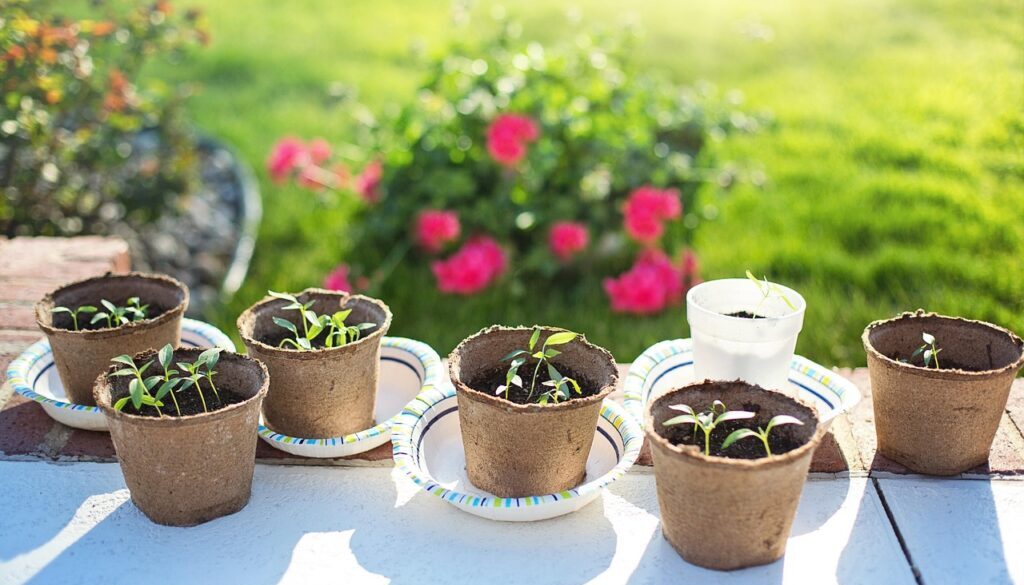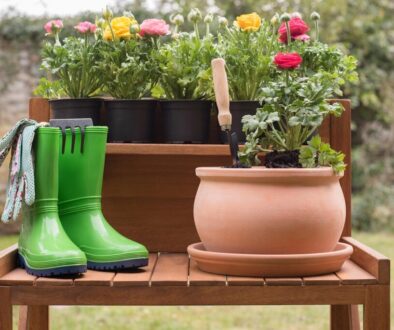Why Your Seeds Aren’t Sprouting (And How to Fix It)
So, you’ve planted your seeds, watered them, and waited… and waited. But nothing’s happening. Don’t worry, you’re not alone. Seed germination can be tricky, but with a few tweaks, you’ll see those little green shoots in no time. Let’s dive into the most common reasons your seeds aren’t sprouting and how you can fix them.
1. You’re Planting Too Deep (Or Not Deep Enough)
Planting seeds at the wrong depth is like sending them on a treasure hunt without a map. Too deep, and they’ll struggle to reach the surface. Too shallow, and they might dry out or get eaten by birds. Most seed packets will tell you the ideal depth, but as a rule of thumb, plant seeds about 2-3 times their size. If you’re unsure, err on the side of shallow—it’s easier for tiny sprouts to push through.
2. Your Soil Is the Problem
Let’s talk dirt. If your soil is too compact, your seeds might feel like they’re trying to grow in concrete. On the flip side, soil that’s too loose won’t hold enough moisture. Aim for a well-draining, fluffy mix that’s rich in organic matter. You can even buy seed-starting mix for the best results. And don’t forget to check the pH! Most seeds prefer a slightly acidic to neutral pH (6.0-7.0). A simple soil test can save you a lot of frustration.
3. Watering Woes: Too Much or Too Little
Watering is a Goldilocks situation—it has to be just right. Overwatering can drown your seeds or lead to mold, while underwatering leaves them high and dry. The key is to keep the soil consistently moist, not soggy. Think of it like a damp sponge. If you’re not sure, stick your finger in the soil. If it feels dry an inch down, it’s time to water. And always use a gentle spray to avoid disturbing the seeds.
4. Temperature Troubles
Seeds are picky about temperature. Too cold, and they’ll just sit there. Too hot, and they might cook before they sprout. Most seeds prefer soil temperatures between 60-75°F (15-24°C). If you’re planting outdoors, check your local frost dates. For indoor starts, consider a heat mat to keep things cozy. And remember, some seeds (like lettuce) actually prefer cooler temps, so do your homework!
5. Old or Poor-Quality Seeds
Even the best gardeners can’t work miracles with old or low-quality seeds. If your seeds are past their expiration date or haven’t been stored properly, they might not sprout at all. Always buy from reputable sources and store seeds in a cool, dry place. Pro tip: Do a germination test before planting. Place a few seeds on a damp paper towel, seal them in a plastic bag, and wait a week. If less than half sprouts, it’s time for new seeds.
6. Light Issues: Too Much or Too Little
Light is another Goldilocks factor. Some seeds need light to germinate, while others prefer darkness. Check your seed packet for specifics. If they need light, don’t bury them—just press them gently into the soil. If they need darkness, make sure they’re covered properly. And once they sprout, give them plenty of bright, indirect light. Leggy, pale seedlings are a sign they’re not getting enough.
7. Pests and Diseases
Even before they sprout, seeds can fall victim to pests and diseases. Fungus gnats, damping-off disease, and hungry critters can all ruin your efforts. To prevent this, use clean containers, and sterile soil, and avoid overwatering. If you’re planting outdoors, consider using row covers or natural repellents. If you spot mold or fungus, remove affected areas immediately and improve air circulation.
8. Patience, Grasshopper
Sometimes, the problem isn’t you—it’s just nature taking its time. Some seeds, like parsley or peppers, can take weeks to sprout. Others might need a period of cold stratification (a fancy term for mimicking winter) before they’ll grow. Before you give up, double-check the expected germination time for your seeds. And remember, gardening is a lesson in patience.
How to Fix It: A Step-by-Step Guide
Now that you know the common issues, let’s talk about solutions. Here’s a quick checklist to get your seeds sprouting:
- Check Your Depth: Plant seeds at the right depth—not too deep, not too shallow.
- Test Your Soil: Ensure it’s well-draining, fluffy, and has the right pH.
- Water Wisely: Keep the soil moist but not soggy.
- Control Temperature: Use a heat mat or adjust planting times for optimal temps.
- Use Fresh Seeds: Test old seeds before planting, and store them properly.
- Provide Proper Light: Follow seed packet instructions for light requirements.
- Prevent Pests: Use clean materials and natural repellents to protect your seeds.
- Be Patient: Give your seeds time to do their thing.
Final Thoughts
Gardening is equal parts science and art, and seed germination is where it all begins. If your seeds aren’t sprouting, don’t get discouraged. With a little troubleshooting, you’ll soon have a garden full of healthy, happy plants. Remember, every gardener has faced this challenge at some point. The key is to learn, adapt, and keep trying. Before you know it, you’ll be a seed-sprouting pro!
So, grab your seeds, get your hands dirty, and let’s turn those stubborn little pods into thriving plants.
Bonus Tips for Success
Still, feeling stuck? Here are a few extra tips to boost your seed-sprouting game:
- Label Everything: It’s easy to forget what you planted where. Use plant markers to keep track.
- Start Small: If you’re new to gardening, begin with easy-to-grow seeds like beans or sunflowers.
- Learn from Failure: Not every seed will sprout, and that’s okay. Use it as a learning experience.
- Celebrate the Wins: When those first green shoots appear, take a moment to enjoy your success.
Common Seed-Sprouting Myths Debunked
Let’s clear up some misconceptions about seed germination:
- Myth: Seeds Need Sunlight to Sprout
- Truth: While some seeds need light, others require darkness. Always check the seed packet.
- Myth: More Water Equals Faster Growth
- Truth: Overwatering can suffocate seeds. Stick to consistent, moderate watering.
- Myth: All Seeds Are the Same
- Truth: Different seeds have different needs. Research each type before planting.
Troubleshooting Specific Seeds
Here’s a quick guide to common seeds and their quirks:
- Tomatoes: Need warm soil (70-80°F) and consistent moisture.
- Carrots: Prefer loose, sandy soil and can take up to 3 weeks to sprout.
- Basil: Loves warmth and light but hates soggy soil.
- Peas: Thrive in cooler temps and should be planted early in the season.
Tools to Make Seed Starting Easier
Investing in a few tools can make a big difference:
- Heat Mats: Perfect for warming the soil to the ideal temperature.
- Seed Trays: Keep your seedlings organized and easy to manage.
- Grow Lights: Ensure your seedlings get enough light, especially in winter.
- Soil Thermometer: Take the guesswork out of soil temperature.
When to Call It Quits
Sometimes, despite your best efforts, seeds just won’t sprout. If you’ve tried everything and still see no results, it might be time to start over. Don’t see it as a failure—see it as a chance to try again with new knowledge.
Your Seed-Sprouting Success Story
Imagine this: You’ve followed all the tips, and fixed the issues, and one morning, you see it—a tiny green shoot breaking through the soil. That’s the magic of gardening. It’s not just about the plants; it’s about the journey, the learning, and the joy of nurturing life.
So, what are you waiting for? Grab those seeds, get planting, and let’s make your garden dreams come true.
Happy Gardening!




